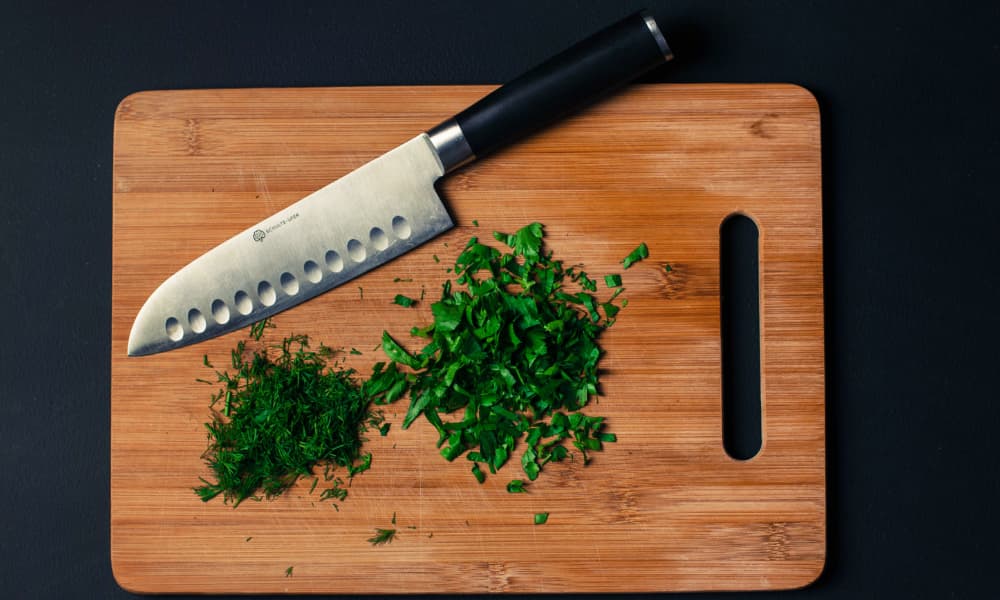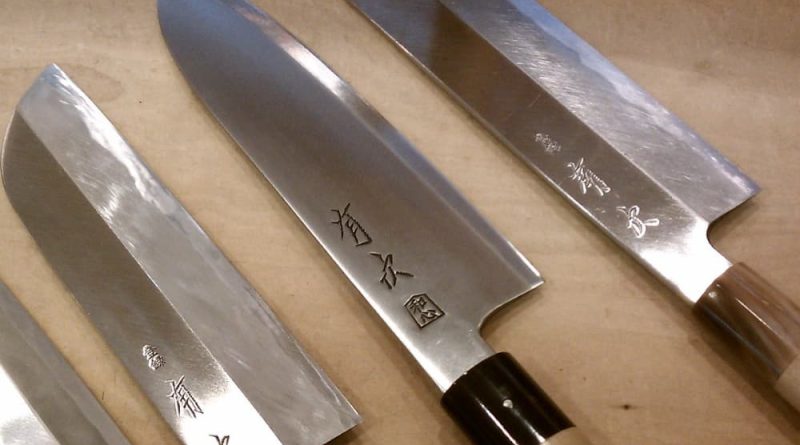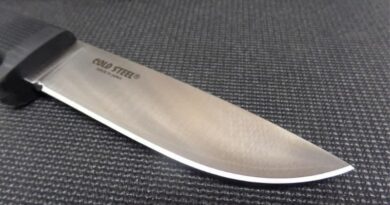Santoku knife, the Japanese knife of the three virtues!
- Why choose Santoku knife?
- Things to know about the Santoku knife;
- What does the word Santoku mean?
- What are the characteristics of the Japanese Santoku knife?
- In conclusion;
Why choose Santoku knife?
Are you considering buying a Santoku knife? But why choose to buy this Japanese knife?
In recent years, Santoku has increasingly acquired an important role in Western culture. But what is the reason that made this product so popular nationally and internationally? Is this professional kitchen knife worth buying to add to our collection of Japanese knives?

Things to know about the Santoku knife.
If you’ve decided to buy a Santoku knife to add to your kitchen knife collection, there are a number of aspects you need to know. First of all you have to know that not all Santoku knives are Japanese or rather of Japanese origin.
In fact, today, given the widespread diffusion of this knife, there are many Western companies that have taken the original shape of this kitchen knife, to then add it to their catalogue.
This aspect is of little importance if you do not want to buy an original Japanese knife. On the contrary, remember to check the origin of the knife.
The western Santoku and that is the knife that has the shape of the Santoku, but the characteristics of a common western knife, can hardly be sharpened on stone.
What does the word Santoku mean?
In Japanese the word Santoku means “three Virtues”, this because for the Japanese the shape of this blade is ideal for cutting vegetables, meat and even fish. This shape is therefore the result of Japanese minimalism which has always worked in order to create a perfect universal blade.
The perfect knife in this sense, is the ideal knife for cutting any type of food. Fruit of a blade, neither too long nor too short of medium thickness.
What are the characteristics of the Japanese Santoku knife?
So what are the characteristics of the Japanese Santoku knife? This oriental knife model, in its original version, is characterized by a number of aspects. Among these, the type of sharpening is particularly noteworthy.
The angle of the edge in Japanese knives can only be made on one side if this knife is left or right handed. Furthermore, this shape, if made in Japan, will certainly not have any type of finger protection. This in order to create a completely flat blade suitable for sharpening on stone.
In conclusion;
In this short article dedicated to Santoku, we have been able to highlight some of the main aspects that characterize this Japanese knife. Starting from the shape, now also reproduced in the West, up to the type of sharpening used. In this sense, we have therefore examined some of the main differences between the Santoku made in Japan and the other versions made in the West with a similar shape.




